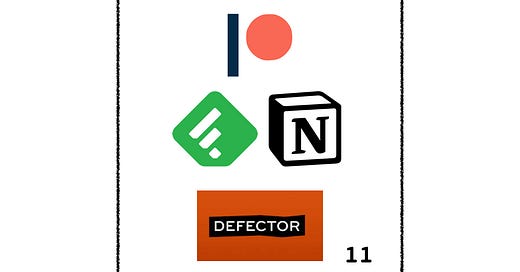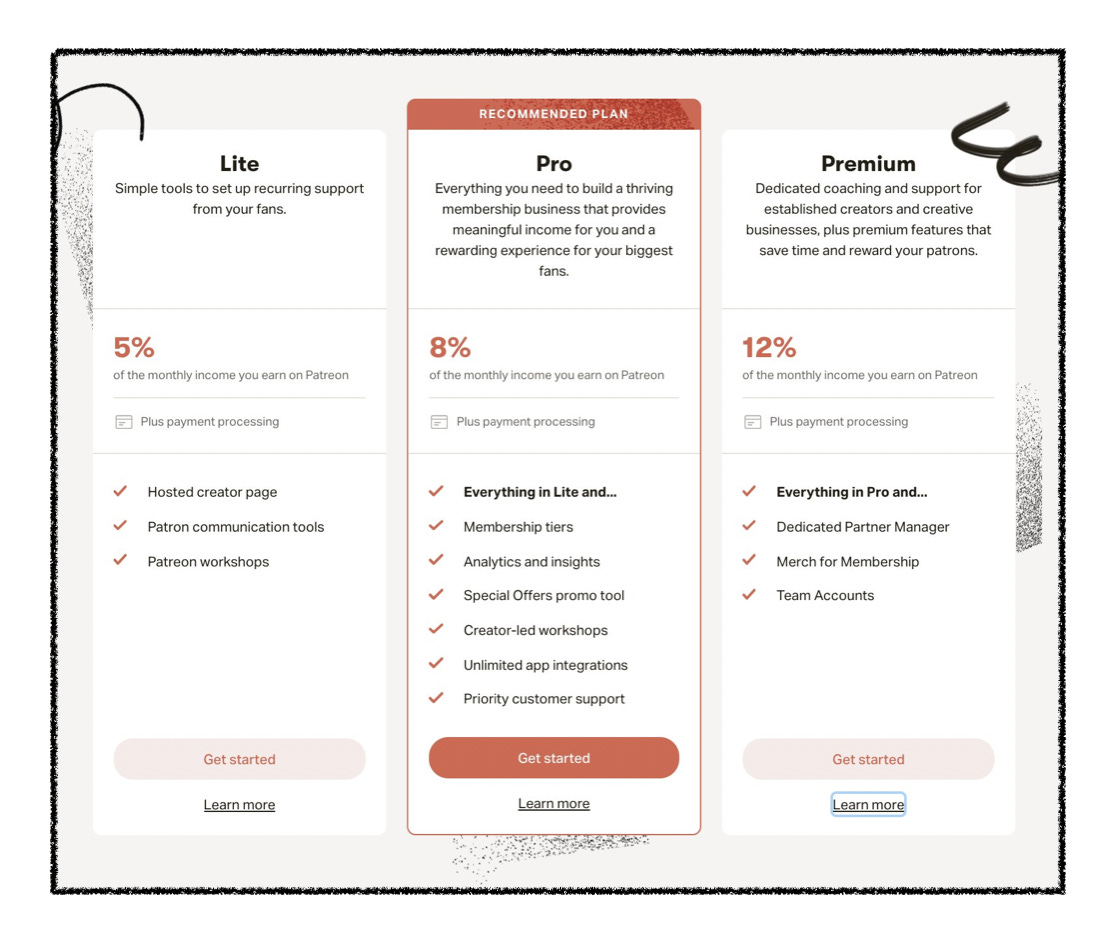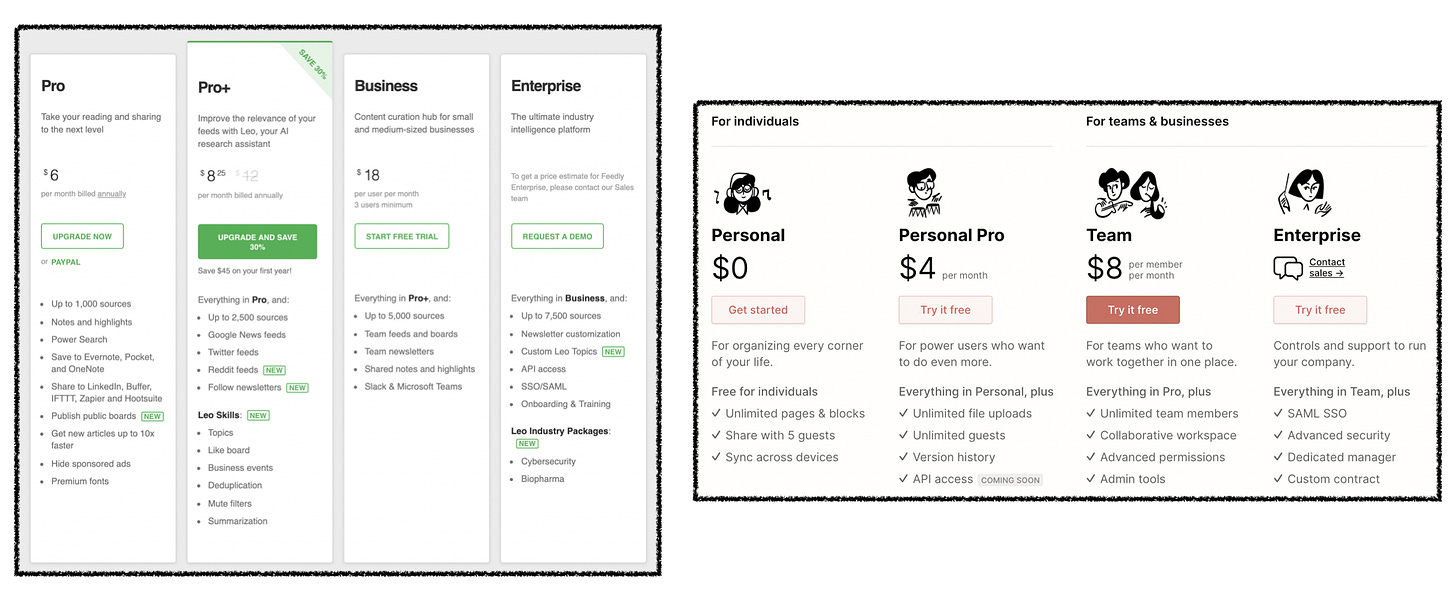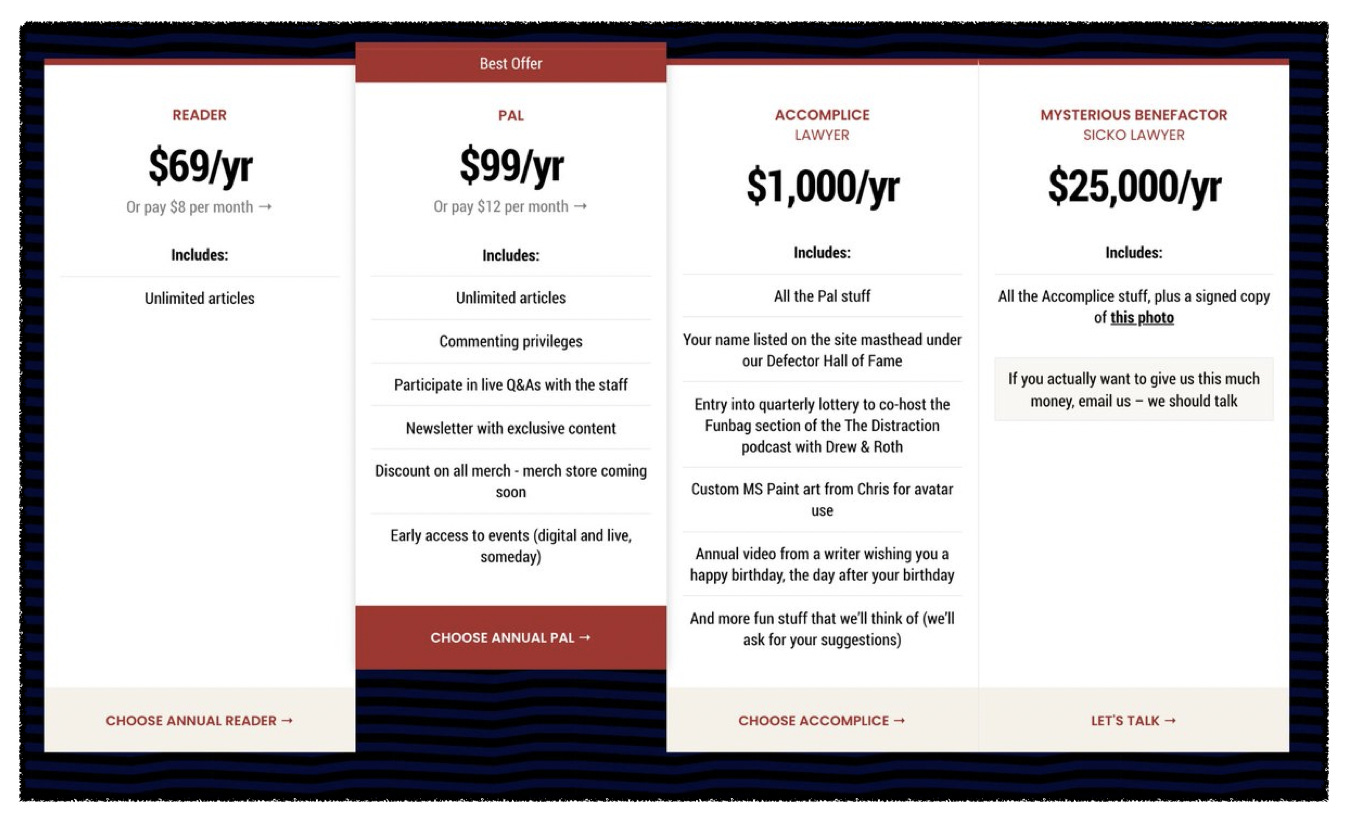SaaS Pricing is hard. PricingSaaS is your cheat code.
Monitor competitors, track real-time benchmarks, discover new strategies, and more.
Happy Sunday y’all!
It’s been a while since I’ve sent a digest, having focused more on case studies for the past couple months. I’m on vacation in Maine this weekend and figured it’s a good time to mix it up with a medley of packaging observations across the subscription world. Next week, we’ll be back to analyzing a single packaging strategy.
Until then, I would love your feedback on the digest format. If you have thoughts, leave a comment or shoot me a note on Twitter!
On to the digest.
Briefing 📋
The Patreon Paradox 🧐: In case you missed last week’s primer, a value metric is what and how you’re charging for your solution. For instance, Salesforce charges per user. An emerging trend is companies shedding value metrics altogether and charging a percentage of the revenue they generate for customers instead. I call this skin-in-the-game pricing, and it’s a powerful strategy that removes ambiguity in the value equation (the optics are great as well). Examples include Substack, Lambda School, and ProfitWell’s own Retain product. Patreon is another example. While I think they’re uniquely suited to the skin-in-the-game approach, their current strategy disincentives upgrades and risks limiting customer expansion.
Feedly, Notion, and Packaging Tea Leaves 🍃: Two of my favorite productivity apps are Feedly and Notion. While they have an almost identical packaging grid, their pricing strategy is widely different. Through comparing their pricing and packaging, it’s clear where each company aims to monetize.
Defector Media’s Brilliant Tier Names 🔥: At ProfitWell, our team is often asked how to name tiers in a packaging grid. My general thought is if your brand voice is distinct or quirky, it makes sense to get a little weird with tier names. Otherwise, I recommend keeping it simple. The newly formed Defector Media is one of those companies with a distinct brand voice, and their tier names do not disappoint.
The Patreon Paradox 🧐
Patreon's pricing is a perfect contradiction of value-based pricing. While their value metric is perfectly aligned with customer value, their pricing structure disincentivizes account expansion.
First, I love their "skin-in-the-game" approach to pricing. They don't make any money unless their creators do. Their hero copy is basically a manifesto for value-based pricing:
However, their pricing structure creates a serious barrier to upgrades. Look at how the take-rate increases with each tier:
Even though they add functionality and support, this should be reversed.
Here's why…
As creators make more money, so does Patreon. By asking a growing creator to give you an even higher percentage of their revenue, you're cutting into their growth, stifling momentum. As a result, when creators consider upgrading, the new rate will scare them away.
If the incentive structure were reversed, growing creators would be excited about upgrading. Patreon could make that happen by lowering their take-rate with each tier and implementing a minimum revenue limit for Pro and Premium. This would have several benefits, including:
Creating a milestone for creators to upgrade, endearing them to Patreon
Locking in a minimal amount of revenue for Patreon despite declining take-rates
Ensuring the Patreon Customer Success team is spending time with qualified creators
If they made this change, it would likely mean making some changes.
I could see them changing their existing take rates and offering high COGS offerings as add-ons rather than differentiators (e.g., Dedicated Support).
The end result of this change is that more successful creators would grow with Patreon and stay for the long haul, which, I imagine, is the exact outcome they’re aiming for.
Feedly, Notion, and Packaging Tea Leaves 🍃
Feedly is one of my favorite apps for aggregating and saving content. It's basically a combination of Pocket and an RSS aggregator. I recently realized that their packaging strategy is almost identical to Notion, another one of my favorite productivity apps.
They both have four plans, two for individuals and two for businesses:
However, there are some noteworthy differences.
First, Notion’s entry-level personal plan is free (a recent move I wrote about here)
Second, Feedly has consumption constraints on their plans, using Sources as a value metric
Third, Feedly’s price points are higher
This struck me as a perfect example of companies monetizing different use cases. Feedly has high price points on the low-end because they primarily monetize consumers. Additionally, collaboration isn’t a key value driver for their platform, so the Feedly team is incentivized to boost ARPU (average revenue per user).
Alternatively, Notion gives away their low-end plans because they want to grow market share and monetize in the Enterprise. Collaboration is a massive value driver for Notion, and likely a big reason why they were willing to remove consumption limits entirely. Unlike Feedly, Notion is willing to sacrifice ARPU in order to fuel ARPA (average revenue per account).
Defector Media’s Brilliant Tier Names 🔥
At ProfitWell, we’re often asked how to name tiers. Honestly, most of the time I think companies overthink it. My general principle is if your brand voice is distinct or quirky, it makes sense to get a little weird with your tier names. Otherwise, I recommend keeping it simple.
Just look at Shopify. Their tier names are as boring as it gets, and they’re doing just fine…
That said, when a brand has personality, I love it when they go all-in on wild tier names. Case in point: Defector Media.
Defector Media is a group founded by the writers that quit Deadspin after their new owner told them to “stick to sports”. You don’t have to look past the company name to see their personality shine through, but in case you missed it, their homepage serves as a not-so-subtle reminder:
As you might expect, their tier names don’t exactly follow the traditional Basic, Pro, Enterprise naming conventions…
Look at these names! 😍
This is a masterclass in weaving personality into the packaging grid. Beyond the tier names, the features are equally out there.
While I don’t expect to sign up for the Accomplice or Mysterious Benefactor plans, I absolutely love this and look forward to following along when these guys formally launch next month.
Enjoying Good Better Best?
If you enjoyed this post, I’d love it if you hit the “like” button, that way I’ll know which posts are resonating the most!
If you have thoughts or feedback, I’d love to hear from you! You can find me on Twitter here.











Your point about Patreon is basically that a volume discount is value-based. The marginal value of a unit declines with volume, so the marginal price should as well.
Feels meta reading this newsletter from Feedly. Great analysis. With Notion offering their Personal plan for free to students and educators and heavily targeting students (through their templates, videos, and influencer marketing), they seem to recognize that their heaviest users may not be customers in the short-term. But reducing the friction to onboard (opposite of Roam) and making it easy to invest ~4 years of notes on the tool, may convert many users to long-term customers.